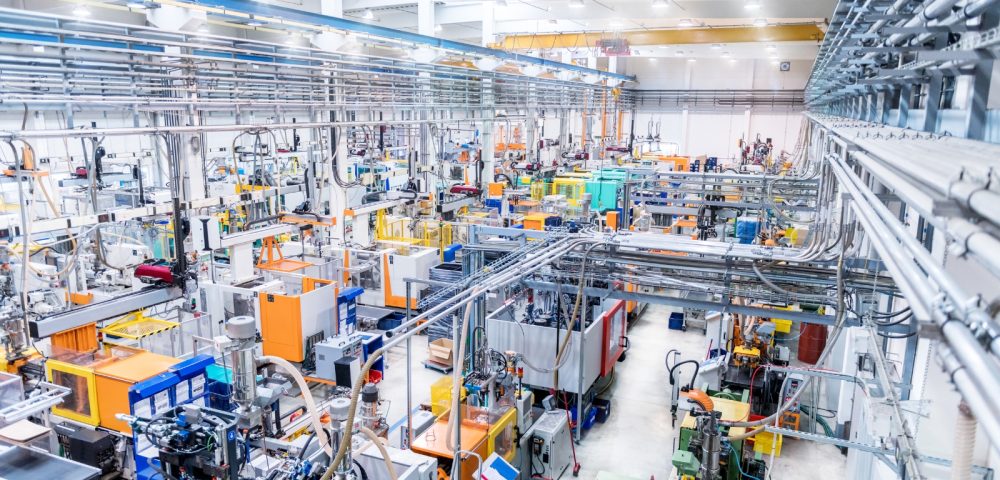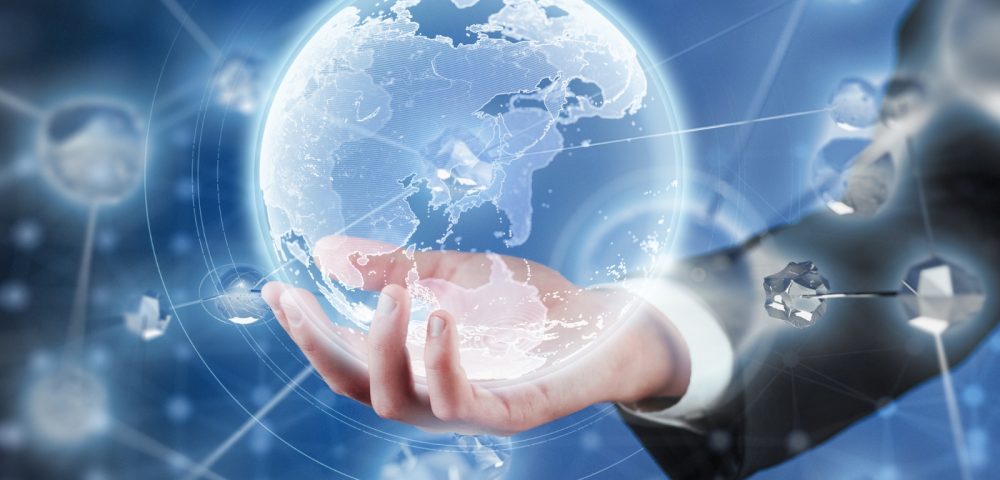‘Production Vs. Manufacturing’ battle has a long history in the industrial world, as many people fail to understand its distinguishing characteristics. This has become one of the main confusions people face and ask about on the internet. This may be seen as one, yet they are different from each other. If you are an upcoming industrialist or an entrepreneur, it will be beneficial for you to know what exactly you are offering.
This article breaks down the key difference between production and manufacturing in a way that clarifies confusion.
What is Production?

The term ‘production’ refers to a wider range of activities that go into preparing a product for the market, including manufacturing.
Production also includes activity-based activities such as mining, fishing, farming, logging (the process of taking raw materials out of the ground), and any other actions necessary to transform those raw materials into final products.
In a deeper sense, we see that production includes packing and labelling a product so that it is ready for sale. Intangible or physical services that meet human needs may also fall under this category.
It always begins with a purpose: to create something that did not exist in that form before. As people work through each step, they shape, combine, or transform things into results that meet needs or solve problems.
Therefore, production includes both goods and services. Every haircut, baked cake, or handmade craft counts as production too.
What is Manufacturing?

Manufacturing is the process of creating products using labour, equipment, raw materials, and other resources; it can also involve formulation or processing that is biological or chemical.
This can produce complicated things that it sells to other manufacturers who assemble them, or it can produce raw materials into finished goods on a big scale. Everything from automotive to aviation and residential items goes through the manufacturing process.
However, manufacturing does not begin on the factory floor. Product design and material selection are the first steps in the process. The source materials undergo modifications during the manufacturing process in order to produce the final product.
There may be intermediate procedures that produce components that are later utilised to build a completed product. In some cases, people refer to manufacturing as ‘fabrication’. The sheet metal industry is one place where this occurs. However, the root concept is the same.
Understanding Key Differences of Production Vs. Manufacturing

Nature of Output
Production involves a mix of results, as it creates both goods and services, depending on the situation.
When this occurs, the end result would be something that is useful to society. Either it can be a touchable product or an untouchable service. If we go much deeper, when a farmer offers a production, this can be a grown vegetable or a fruit, while a teacher’s production can be a useful lecture or a moral-boosting speech.
On the other hand, manufacturing sticks to one side. It only creates physical, touchable goods that you can move, pack, and sell. This is where we emphasise items like smartphones, cars, or clothing, each of which comes out of a manufacturing process that ends with a ready-made item. This key difference separates the two terms clearly.
As you can see, while all manufacturing results in a product, not all production does.
Industry Applications
Since it is not limited to one or a few touchable outputs, this spreads across a variety of industries. Production occurs even in agricultural landscapes when farmers put their efforts and resources into cultivating one outcome, which is the harvest. In the same way, in a software company, a web developer can build an app which will be in cyberspace. A musician can offer a new music album, and everything comes as the final outturn.
This differs when we look at manufacturing, as it only counts the industries that create a physical element. This is where automotive factories, electronic manufacturers, the textile sector and etc come into play. The speciality is that each one of these builds their commodity by turning raw materials into finished goods. This is done through a massively complex operational framework using machines, workers, and structured steps.
Scope
Production covers a wider space, as it includes every activity that turns inputs into something useful, whether it is a good or a service. People can produce meals, designs, cleaning services, or even digital tools without using factories or heavy equipment. This makes production more flexible and easier to spot in everyday life.
However, manufacturing focuses only on physical goods.
This does not touch the domains that create intangible services or anything. Manufacturing only occurs within an environment which can be controlled by humans, and this mechanism is full of machines, workers, and materials. For example, if you take an electrical appliance or furniture, you can see that it takes lots of pre-established workload to shape the raw materials into the final product.
Production has no geological barriers to happen as people can offer services inside the classroom, the kitchen, or even online, yet manufacturing requires specific industrial zones.
Use of Machinery
In production, people sometimes use machines, but not always. A farmer might use basic tools, while a chef may rely only on skill. A teacher, therapist, or consultant does not need complex machines to produce results. This means production allows for more variety in how work gets done. Some methods can be manual or personalised.
In contrast, manufacturing almost always depends on machines to do the job. Machines handle cutting, shaping, assembling, or packaging in ways that stay fast and consistent. Workers usually monitor the process or guide the equipment, but machines do the heavy lifting. As products grow more complex, manufacturing relies even more on advanced technology.
Human Involvement
Production usually needs people to play a bigger part, especially in service-based activities. A therapist, artist, or chef brings personal skill, decision-making, and emotional input into their work, and machines cannot fully replace that. This kind of production leans on creativity, hands-on care, or real-time choices.
In manufacturing, however, human involvement usually plays a more technical or repetitive role. People will guide machines, manage quality checks, or operate systems, but machines handle most of the work. Automation usually reduces the need for human skill in the actual creation process. So while people still matter, their jobs look different in each case.
End-to-End Process
The speciality of production is that it simply starts with inputs like raw materials, tools, or talent and knowledge, then ends with an output that provides a value to society, like a service or product. This journey can be complicated than we actually predict. For example, a professor has to spend his time, resources and expertise, which is not physically visible, on crafting, delivering, or performing a lecture. This depends on the field that is concerned. When one person grows vegetables, another one may offer medical or beauty treatment, or another person may write an article. Whatever shape the outturn comes, they all present a finished result.
This is different when it comes to manufacturing, as it takes raw materials and transforms them into physical items. This path is created through a series of mechanical or technical steps. Plus, the latter process usually runs on the same wheel, which is gathering materials, processing them, assembling parts, and creating the final item.
Manufacturing does not include service delivery or one-time creative tasks. It focuses on producing consistent, repeatable goods with set features. While both start with inputs and end with results, their steps look very different.
Cerexio's Scalable Software Solutions for Production and Manufacturing

With Cerexio’s industry 4.0-powered MES, production teams can oversee service workflows and inventory with clear visibility, boosting accuracy and speed. Also, manufacturers benefit from automated control and detailed machine analytics that maintain high product standards. Our scalable software solution bridges the gap, helping different industries manage complex processes in one integrated system.
Running towards Faultless Manufacturing and Production with the Right Technologies

Errors can happen, true! However, it does not come cheap. It costs time, money, and reputation. Why would you waste your resources when you can save them instead? The secret lies in adopting the right technologies designed to detect, prevent, and correct mistakes automatically. This shift is not just about efficiency; it is about redefining what ‘quality’ truly means in manufacturing and production while making way for errorless operations.
FAQ about Production Vs. Manufacturing
Initially, the production era centred on availability and cost-effectiveness. The product era brought quality improvements. Later, marketing stressed promotion and customer focus, leading to today’s relationship marketing, which aims to satisfy customers through lasting engagement.
A production product refers to goods or wafers requested by a customer following successful qualification and the customer’s approval of a prototype. The main requirement of this is that it must pass through a set of standards before the actual manufacturing process starts.
Both of them produce some form of thing. Manufacturers produce tangible items, where producers can offer goods or services. However, every manufacturer acts as a producer, yet many producers do not manufacture since they may provide services or intangible items.
